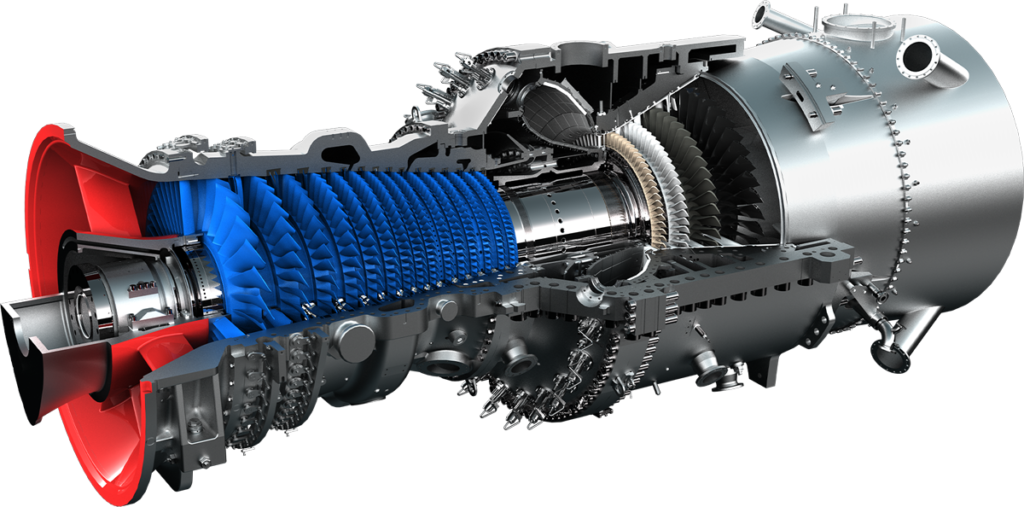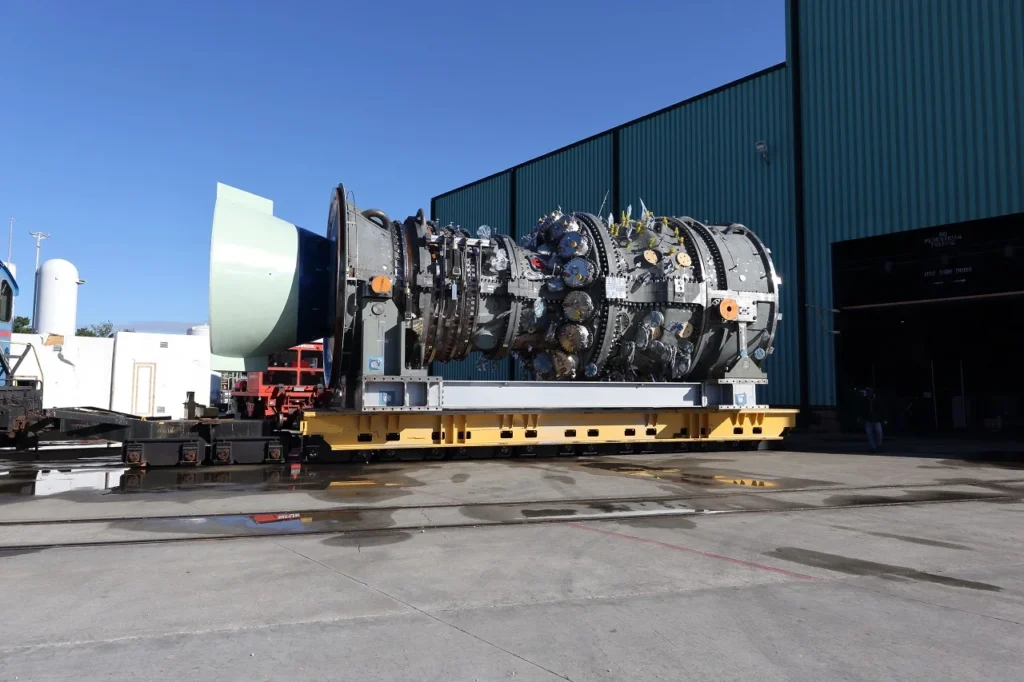FACTORS IMPACTING SAFETY - GAS TURBINES

Combustion chamber design: A poorly designed combustion chamber can lead to unsafe operating conditions, such as flashback or uncontrolled combustion. Proper design and maintenance of the combustion chamber are necessary for safe operation of gas turbines.
Fuel system design: The fuel system must be designed to ensure that fuel is delivered to the combustion chamber in a controlled manner. Proper fuel filtration, flow control, and pressure regulation are necessary to prevent fuel-related accidents.
Control system design: The control system must be designed to monitor and control all aspects of the gas turbine’s operation. Proper control system design and maintenance are essential for safe operation.
Maintenance procedures: Regular maintenance of gas turbines is necessary to ensure safe operation. Proper maintenance procedures must be developed and followed to prevent accidents.
Training of personnel: Operators, maintenance personnel, and other personnel involved with gas turbine operation must be properly trained to ensure safe operation. Ongoing training and certification programs are necessary to maintain safe operation.
Safety systems: Gas turbines must be equipped with appropriate safety systems, such as fire detection and suppression systems, emergency shutdown systems, and gas detection systems. These systems must be properly designed, installed, and maintained to ensure safe operation.
Risk assessments: Risk assessments should be conducted regularly to identify potential hazards and to develop appropriate mitigation measures. A thorough understanding of the risks associated with gas turbine operation is necessary for safe operation.
Compliance with regulations: Gas turbines must comply with all applicable regulations and standards related to safety. Manufacturers, operators, and maintenance personnel must be aware of and comply with these regulations and standards.
Overall, the safe operation of gas turbines requires proper design, maintenance, training, and risk management. It is essential to continuously assess and improve safety practices to prevent accidents and ensure safe operation.

WHY, WHEN, WHERE, WHAT, WHICH, HOW TO APPLY SAFETY FACTORS ANALYSIS IN ENGINEERING & DESIGN
Applying safety studies and analysis as part of the engineering and design process in gas turbines is crucial to improving maintainability, reliability, availability, and safety in existing plants and new projects for power generation plants, oil, gas, and petrochemical industries. Here’s a breakdown of the key aspects:
Why to apply safety studies and analysis: Safety studies and analysis help identify potential hazards, assess risks, and implement appropriate safety measures to prevent accidents, protect personnel, equipment, and the environment, and ensure the safe and reliable operation of gas turbines.
When to apply safety studies and analysis: Safety studies and analysis should be conducted at various stages of the gas turbine lifecycle, including during the initial design phase, as part of modifications or upgrades, and regularly during the operation and maintenance phase. It is important to conduct safety assessments whenever there are changes in process conditions, equipment, or operating parameters.
Where to apply safety studies and analysis: Safety studies and analysis should be applied to gas turbines in power generation plants, oil refineries, gas processing plants, petrochemical facilities, and any other industrial settings where gas turbines are utilized.
What safety studies and analysis entail: a. Hazard Identification: Identify potential hazards and risks associated with the gas turbine system, including mechanical, electrical, and process-related hazards. b. Risk Assessment: Assess the severity, probability, consequences of identified hazards to determine risk levels. c. Safety Measures: Develop and implement safety measures such as safety interlocks, emergency shutdown systems, fire protection systems, and gas detection systems. d. Safety Instrumented Systems (SIS): Evaluate the reliability and performance of safety instrumented systems, such as emergency shutdown systems and safety controls, to ensure they meet the required Safety Integrity Level (SIL). e. Human Factors: Consider human factors engineering principles to optimize the design and operation of gas turbines, including ergonomic considerations, alarm management, and operator interface design. f. Safety Documentation: Prepare safety documentation, including safety reports, operating procedures, and maintenance procedures, to provide clear guidelines for safe operation and maintenance.
Which standards to follow: Follow relevant industry standards and guidelines, such as those provided by international organizations like the International Electrotechnical Commission (IEC), American Petroleum Institute (API), and regulatory bodies specific to the power generation, oil, gas, and petrochemical industries.
How to apply safety studies and analysis: a. Engage multidisciplinary teams comprising engineers, safety professionals, and operational personnel to ensure a comprehensive evaluation of safety aspects. b. Conduct thorough risk assessments, such as Hazard and Operability Studies (HAZOP), Failure Modes and Effects Analysis (FMEA), and Fault Tree Analysis (FTA), to identify potential failure modes, assess their consequences, and implement appropriate risk reduction measures. c. Continuously monitor and review safety performance through incident investigation, near-miss reporting, and audits to identify areas for improvement and implement corrective actions. d. Collaborate with equipment manufacturers, suppliers, and industry experts to incorporate the latest safety technologies and best practices in the design and engineering of gas turbines.

PROCEDURES, ACTIONS, STUDIES, MITIGATION, RECOMMENDATIONS TO APPLY SAFETY FACTOR ANALYSIS IN ENGINEERING & DESIGN
To apply safety factors analysis in the design and engineering of gas turbines for power generation plants, oil, gas, and petrochemical industries, several procedures, actions, studies, mitigations, and recommendations can be followed. Here is a breakdown of each aspect:
Procedures: a. Establish a Safety Management System (SMS): Develop and implement a comprehensive SMS that outlines the procedures, responsibilities, and protocols for managing safety throughout the lifecycle of gas turbines. b. Conduct Safety Reviews: Perform regular safety reviews at various stages of the design and engineering process, including conceptual design, detailed design, and during modifications or upgrades. c. Follow Safety Standards and Regulations: Adhere to relevant safety standards and regulations specific to the power generation, oil, gas, and petrochemical industries, such as those provided by regulatory bodies and organizations like the International Electrotechnical Commission (IEC), American Petroleum Institute (API), and Occupational Safety and Health Administration (OSHA).
Actions: a. Hazard Identification: Identify potential hazards associated with gas turbines, including mechanical, electrical, and process-related hazards. b. Risk Assessment: Assess the severity, likelihood, and consequences of identified hazards to determine the level of risk they pose. c. Safety Measures Implementation: Implement appropriate safety measures to mitigate identified risks, such as engineering controls, administrative controls, and personal protective equipment (PPE). d. Safety Training: Provide comprehensive safety training to personnel involved in the design, operation, and maintenance of gas turbines, ensuring they are aware of the potential risks and the necessary safety procedures to follow.
Studies: a. Failure Modes and Effects Analysis (FMEA): Conduct FMEA studies to identify potential failure modes of gas turbines and assess their effects on safety, reliability, and availability. b. Fault Tree Analysis (FTA): Perform FTA studies to analyze and quantify the various failure events that could lead to a safety incident or loss of availability in gas turbines. c. Reliability-centered Maintenance (RCM): Apply RCM principles to identify critical components and develop maintenance strategies that prioritize safety, reliability, and availability.
Mitigations: a. Safety Instrumented Systems (SIS): Implement Safety Instrumented Systems to detect abnormal operating conditions, activate alarms, and initiate automatic safety actions, such as emergency shutdowns or isolation of hazardous equipment. b. Fire and Gas Detection Systems: Install reliable fire and gas detection systems to detect and mitigate potential fire or gas release incidents. c. Safety Interlocks: Implement safety interlocks to prevent unsafe operating conditions, such as overspeed, overpressure, or excessive temperatures. d. Equipment Redundancy: Incorporate redundancy in critical components or systems to ensure fail-safe operation and minimize the impact of equipment failures.
Recommendations: a. Engage a multidisciplinary team of engineers, safety professionals, and operational personnel to ensure a holistic approach to safety in the design and engineering of gas turbines. b. Foster a safety culture within the organization that promotes open communication, encourages reporting of near-misses and incidents, and supports continuous improvement in safety practices. c. Stay updated with the latest advancements in safety technologies, regulations, and industry best practices through regular training, conferences, and collaboration with equipment manufacturers and industry associations. d. Conduct thorough and periodic safety audits and inspections to verify compliance with safety standards and identify areas for improvement.

